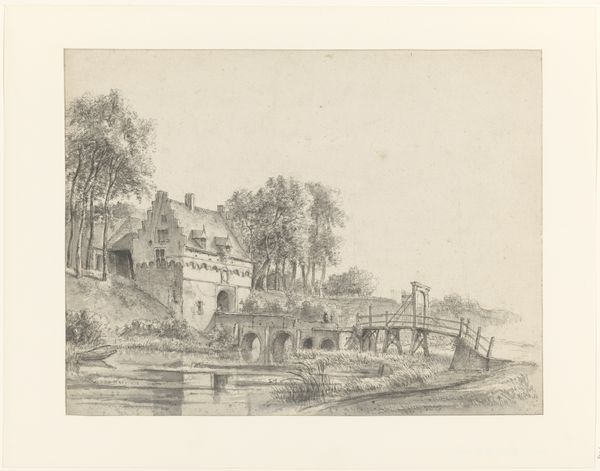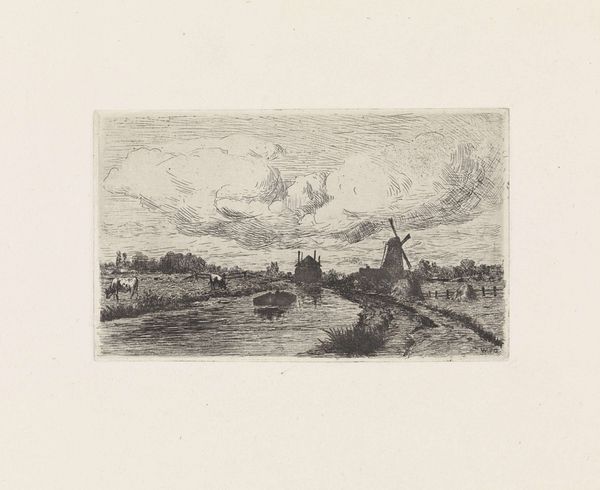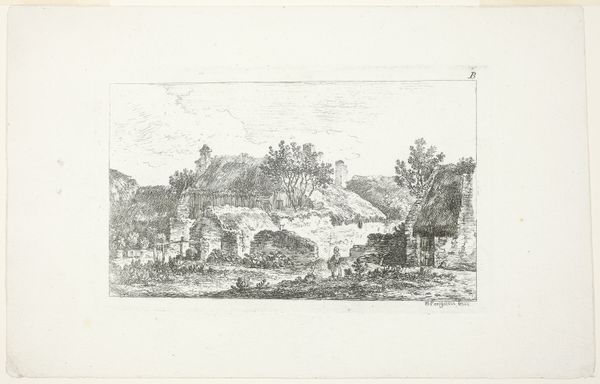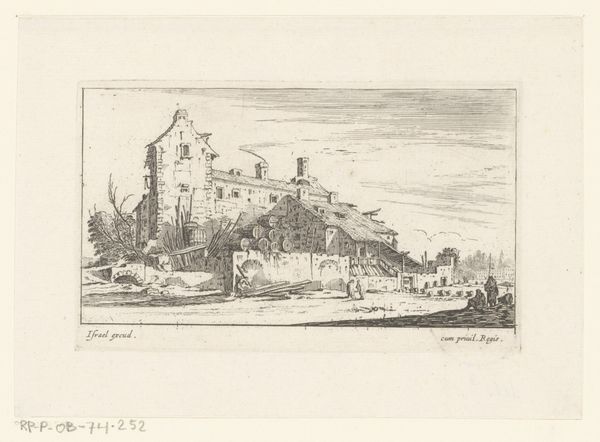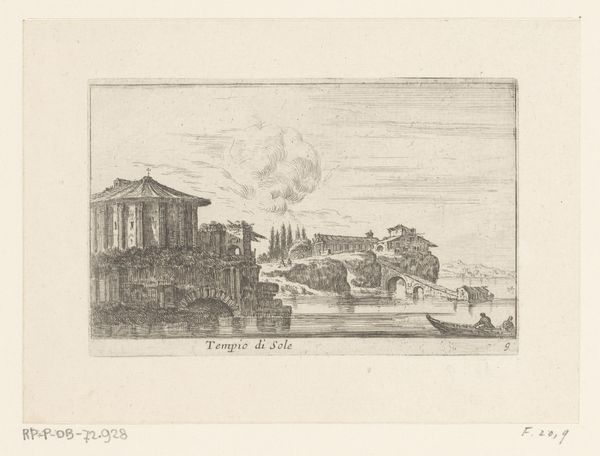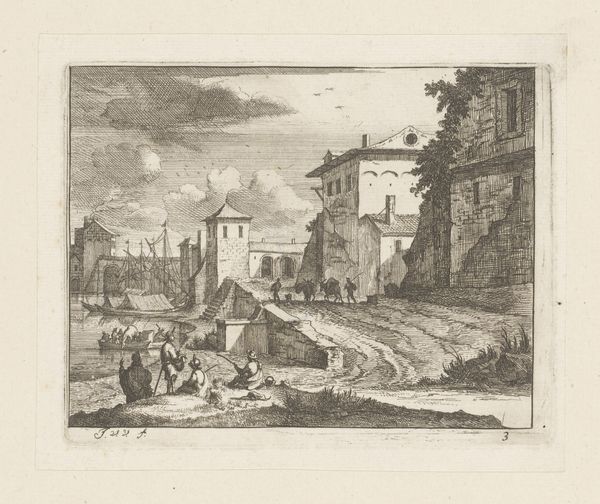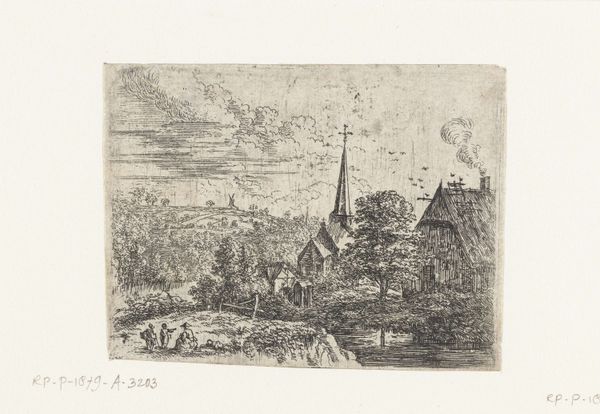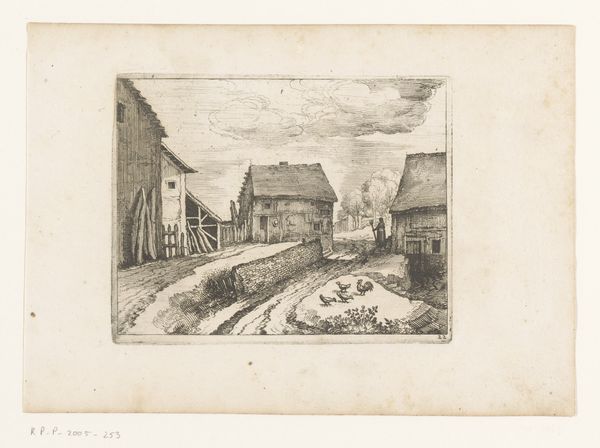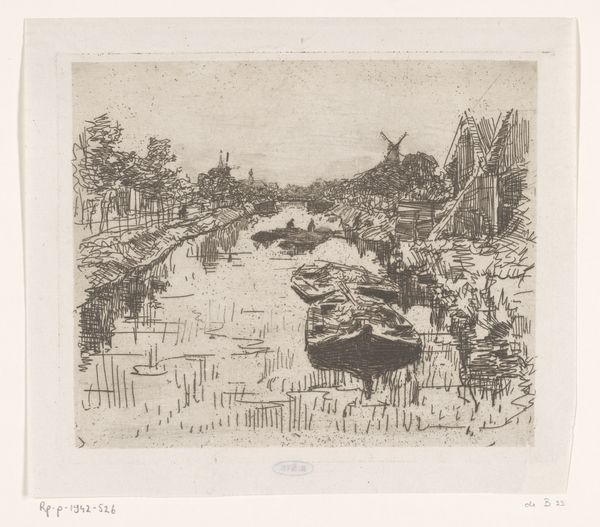
print, etching, engraving
#
baroque
# print
#
etching
#
old engraving style
#
landscape
#
cityscape
#
history-painting
#
engraving
Dimensions: height 75 mm, width 125 mm
Copyright: Rijks Museum: Open Domain
This print of the Ponte Santa Maria was made by Israel Silvestre in the 17th century, using etching on paper. It is one of many such prints that were made and sold to a growing urban population. The etching process involves drawing with a needle on a wax-coated metal plate, which is then dipped in acid. The acid bites away the exposed lines, which are then inked and printed. The multiplication of images made possible by this technique was revolutionary. Prints could be made quickly and relatively cheaply. Note how Silvestre has used fine lines to create a sense of depth and texture in the buildings and water. The figures in the foreground add a sense of scale and human activity. This etching wasn't just a depiction of a bridge; it was also a commodity, reflecting the burgeoning market for art in early modern Europe. It represents a shift towards a more democratic art form, accessible to a wider audience.
Comments
No comments
Be the first to comment and join the conversation on the ultimate creative platform.


